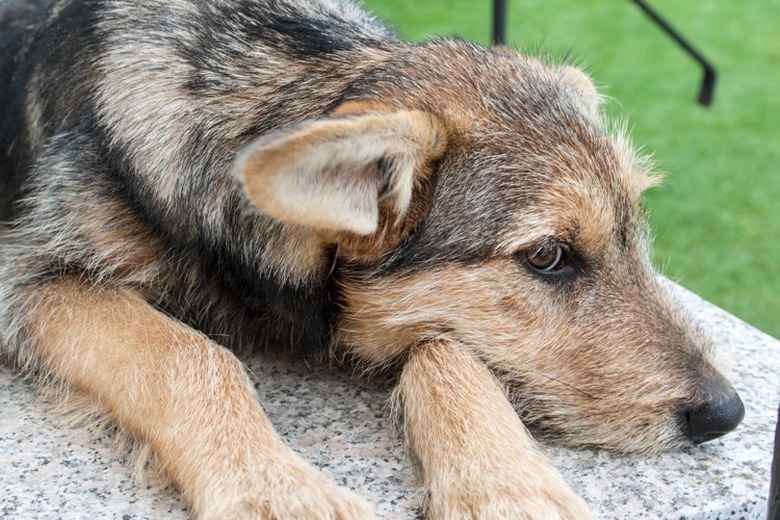Can A Horsefly Bite Hurt A Dog?
Horseflies are large insects with powerful bites that are common in North America. Horseflies are dangerous for horses because they carry equine infectious anemia, but they are not very harmful to dogs. If a dog gets a horsefly bite, the resulting welt will need to be treated like a cut and cleaned.
What is a horsefly?
What is a horsefly?
A horsefly bite hurts, but fortunately, it doesn't pose much danger to a dog or human. Ranging from about half an inch to 1 1/4 inches in length, horseflies are bigger than the average black fly. They live around farms and stables where there are large animals present, such as horses and livestock. Horseflies breed in manure — another reason they are commonly found at a barn — and consume the blood of animals by latching onto the skin. Open water, such as ponds, will also attract them.
Horsefly bites are painful. Horseflies have a scissorlike pair of mandibles capable of biting through tough hides, like those on horses and cows, so they can easily bite a dog. Visible but not excessive bleeding will occur. Only the female horsefly feeds on blood, and they are active during warmer temperatures and in sunlight. Not much deters them, including repellent. A jumpy horse is a good indication that they are flying around.
Horsefly bites on dogs
Horsefly bites on dogs
The first sign of a horsefly bite on a dog is that the dog will likely yelp. Horsefly bites hurt. Then, the bite will bleed but not excessively. The small incision should clot in a few minutes, but a red irritation will remain, scabbing over in a few days.
Fortunately, it's unusual for horseflies to swarm, so there shouldn't be more than one bite. However, several bites can cause a lot of irritation on a dog or other animal, and each bite needs to be cleaned and disinfected before scabbing. Treat the bite like a small cut.
Can fly bites make a dog sick?
Can fly bites make a dog sick?
Horsefly bites hurt, and the sawlike fly mouth literally cuts skin so it bleeds noticeably. Animals feel a horsefly bite. However, other than throbbing for a few minutes and the need for immediate cleaning, they pose little danger to a dog. There's not much a dog can catch from a horsefly. Horsefly bites are more dangerous to horses than to dogs.
However, some dogs are allergic to horsefly bites and other insect bites. If the dog is allergic, the risk becomes more dangerous. Signs of allergic reaction include difficulty breathing, tongue swelling, and vomiting. Seek veterinary attention immediately. Other problems are infections. Because the bite is fairly deep, cleaning and disinfecting the small wound is important. The wound might have to be cleaned several times until it heals.
Treating a horsefly bite
Treating a horsefly bite
To treat a horsefly bite on a dog, first hold a cloth, cotton ball, or tissue over the horsefly bite on the dog to stop the bleeding. This should only take a minute or two. An ice cube or cold compress held on the bite for about 10 minutes will also help to take down swelling and reduce pain.
Second, cleanse the bite with water and apply an over-the-counter antibacterial ointment (safe for dogs) or an antiseptic spray that reduces itching. Keeping a dog-friendly first-aid kit on hand is good practice.
Finally, reapply the ointment a few times. The horsefly bite should heal in a few days. However, the bite will be itchy. If the dog itches, watch for signs of infection, such as swelling or pus. The dog might need veterinary care and an antibiotic in that case.
Fly repellent for dogs
Fly repellent for dogs
The best way to prevent a horsefly bite is to knock them off an animal before they bite. Horseflies are big, so this involves more than a swoosh; connect with the fly like a racket to a ball. Fly sprays or fly repellent for dogs does little to deter horseflies and nor does the wind. Winds must be strong because horseflies can withstand most breezes thanks to their size.


